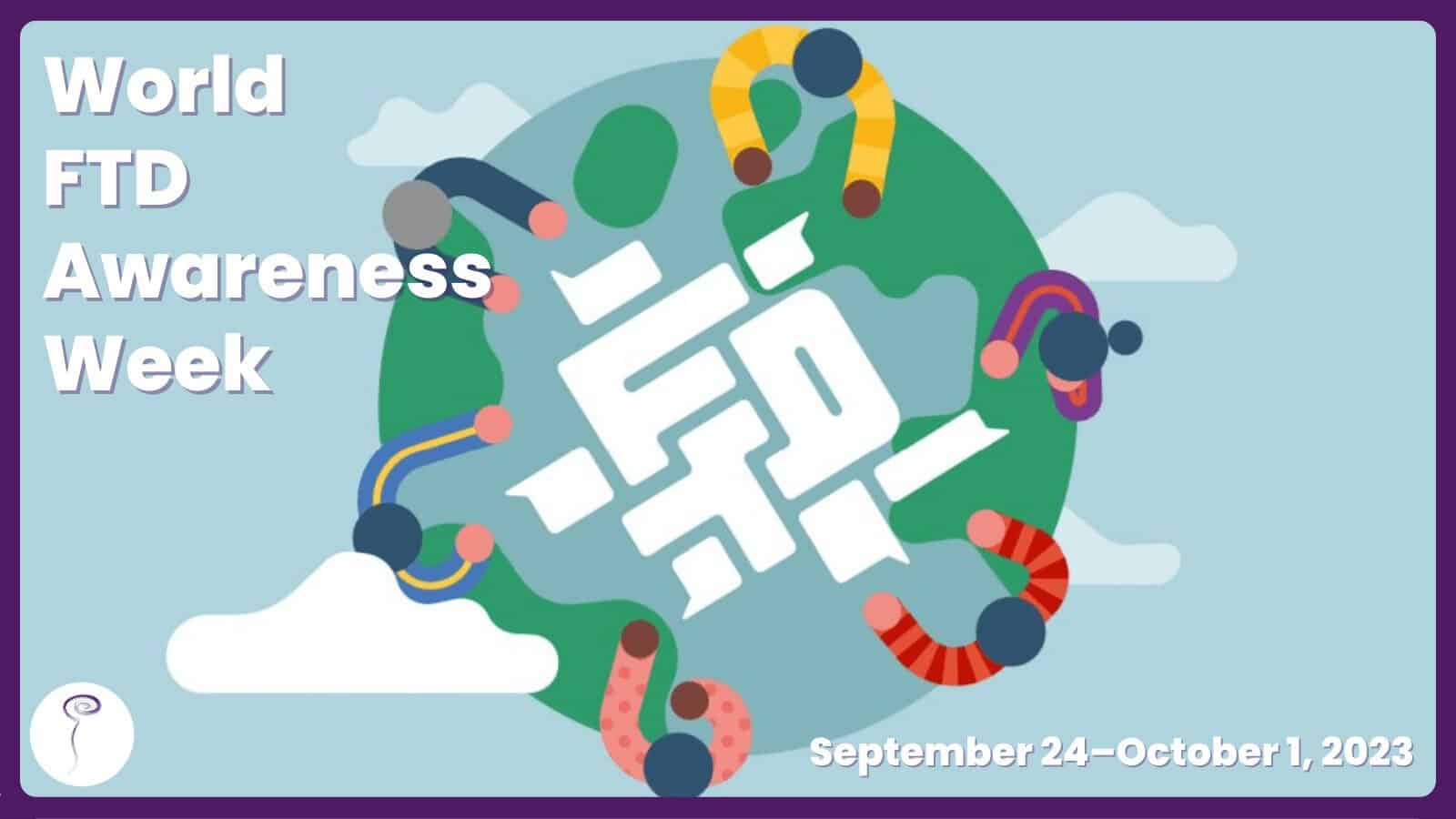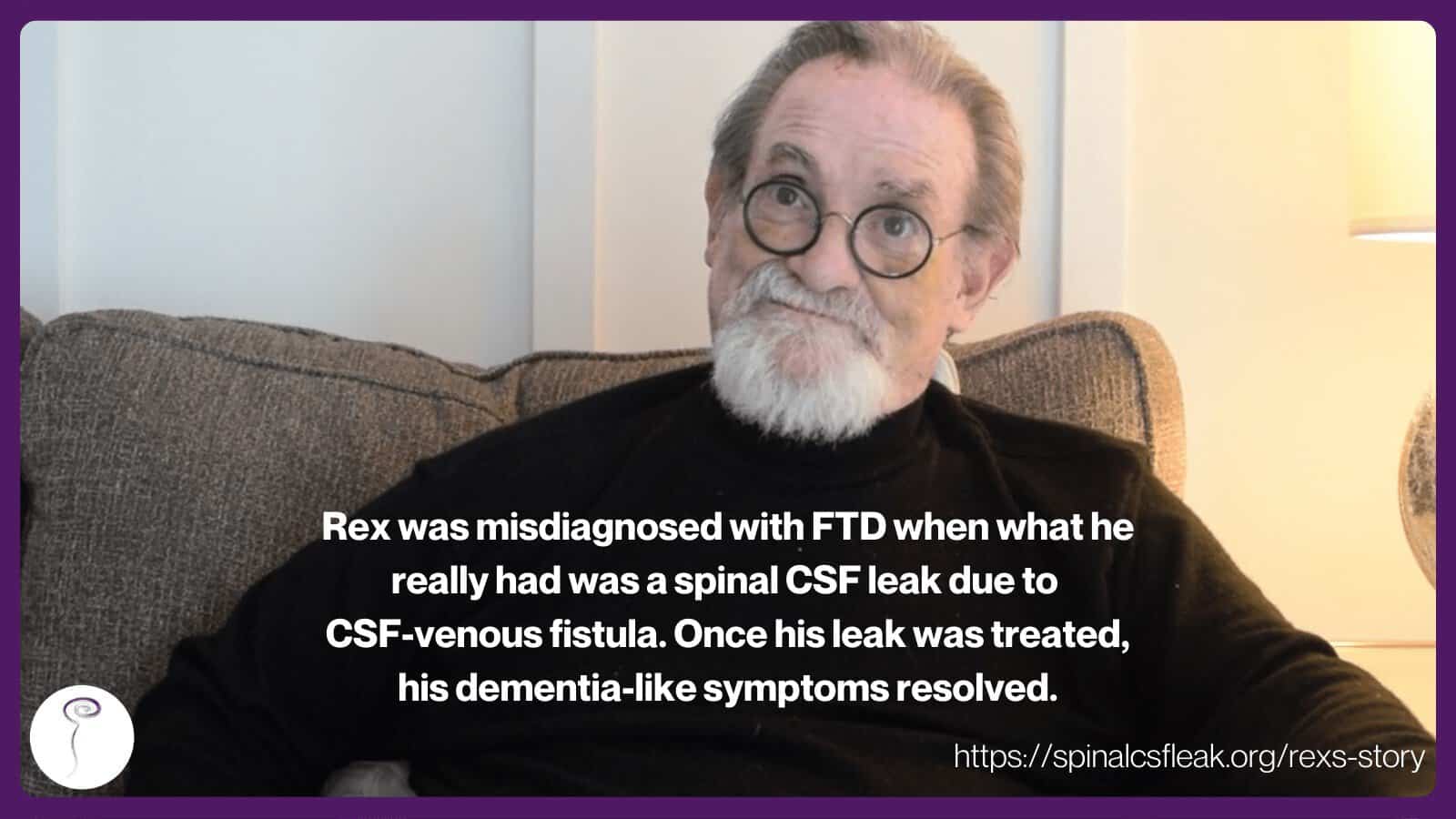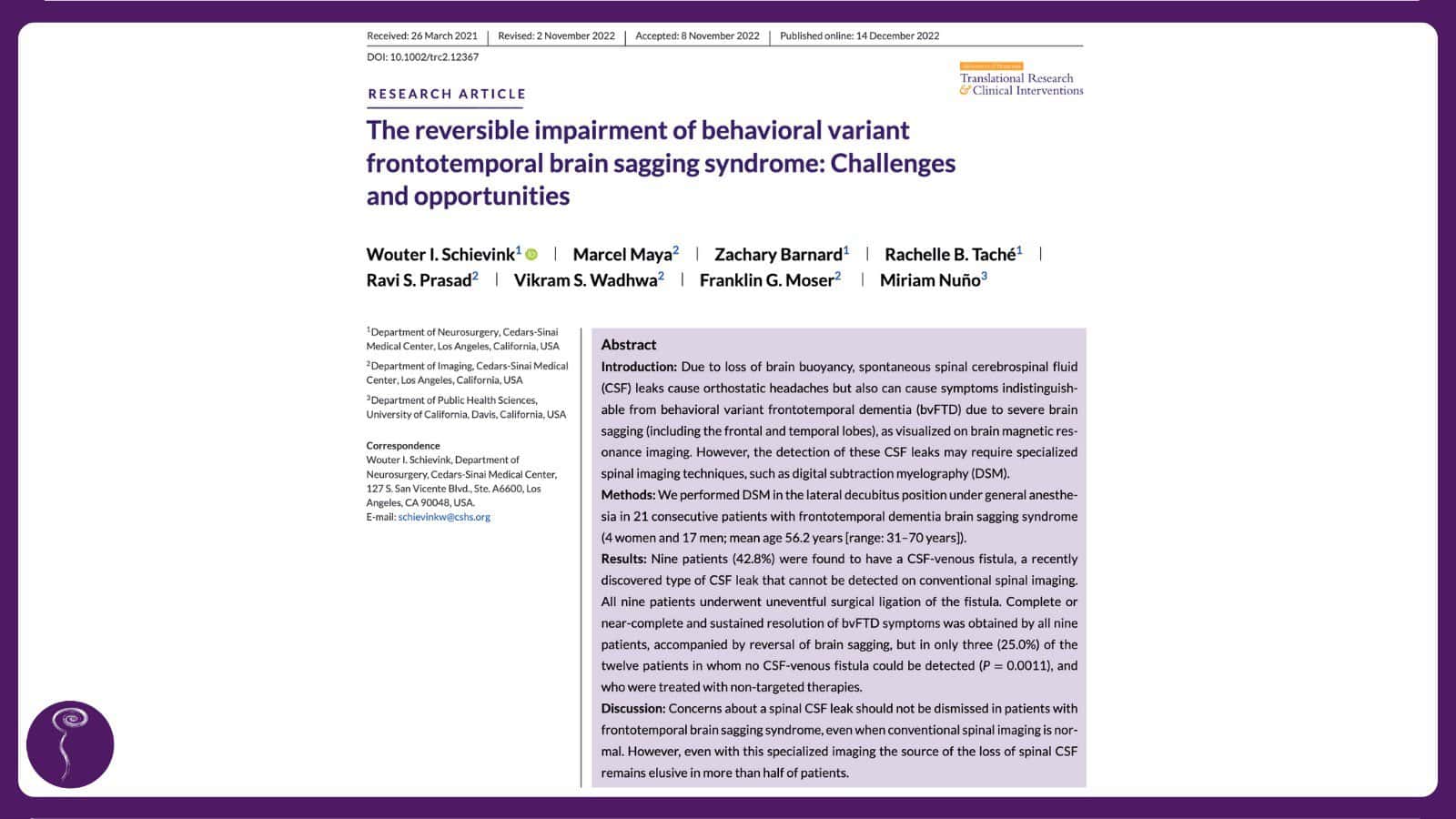This week is World FTD Awareness Week. FTD, also known as frontotemporal dementia, frontotemporal lobar degeneration (FTLD), or Pick’s disease, is a group of brain disorders caused by degeneration of the frontal and/or temporal lobes of the brain. It is the most common form of dementia for people under 60. Its symptoms include a progressive decline in behavior, language, or movement, and is often misdiagnosed as Alzheimer’s, Parkinson’s, or a psychiatric condition. But did you know that some cases of intracranial hypotension due to spinal cerebrospinal (CSF) leak can present with these same symptoms?
FTD and Spinal CSF Leak
While head pain is the most common symptom resulting from intracranial hypotension (or low pressure in the head) due to a spinal CSF leak, patients can experience a wide range of neurological symptoms and complications. These can include everything from “brain fog” to cognitive dysfunction, memory disturbance, slowed processing speeds, mixing up letters and numbers, and a host of other difficulties—up to and including symptoms that resemble that of dementia. Sometimes these symptoms can be mistaken for FTD.
Rex’s spinal CSF leak was misdiagnosed first as meningitis, then as Chiari, and finally as FTD. Luckily for Rex, his family members pushed for a correct diagnosis. He was seen by a neurologist knowledgeable about spinal CSF leak who recognized that his dementia-like symptoms might actually be from a leak. Ultimately, tests revealed that Rex had a spinal CSF leak caused by a CSF-venous fistula. Upon having surgery to address the CSF-venous fistula, all of Rex’s symptoms resolved.
Read Rex’s story and watch the video of his remarkable journey here.



